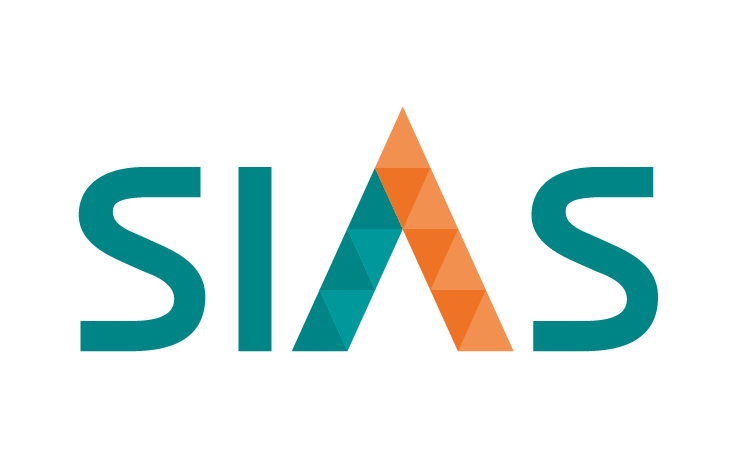Date: August 11, 2025

- The STI rebounded 2.1%, regained the 4,200 level at 4,239.83
- All major US indices rose for the week
- DBS stood out, surging 6.6% for the week to S$50.74
- Most analysts called a “buy’’ on DBS
- UOB Q2 profit falls 6% to S$1.34 billion; misses expectations
- FTSE ST Industrials Index rose 13.2% in July: SGX Research
- Between July 25-31 institutions were net sellers of Singapore stocks
- iFast named by Forbes Asia as one of Best Under a Billion
The STI rebounded 2.1% led by DBS
Boosted by a surge in DBS, the Straits Times Index rebounded last week, rising four consecutive days between Monday and Thursday before ending weaker on Friday. Still, the index managed to regain the 4,200 level that had been lost the previous week, rising a net 86 points or 2.1% to 4,239.83.
Daily volume also improved, crossing the S$2b mark on Thursday and Friday.
All major US indices rose for the week
Wall Street on Friday posted its best week since late June, driven by a combination of a rebound from a weak July jobs report, a surge in tech stocks, a largely solid batch of quarterly earnings, and hopes of a truce between Russia and Ukraine. Investors also received a host of tariff updates.
On Monday, the major averages bounced back strongly from the fallout of the July nonfarm payrolls report. Weaker than expected services data dragged the indexes on Tuesday, but they recovered on Wednesday on the back of an advance in Apple which confirmed a new US$100b on top of a previous US$500b pledge, in a move that many analysts said was designed to avoid any tariff impacts.
Markets were subdued on Thursday but ended the week with another rally on Friday. Signs of progress between Russia and Ukraine also buoyed sentiment.
For the week, the benchmark S&P 500 climbed 2.4%, while the tech-heavy Nasdaq Composite gained 3.9%. The blue-chip Dow Jones Industrial Average added 1.3%.
DBS crossed S$50, up 6.6% after better-than-expected Q2 profit of S$2.82b
DBS on Thursday reported a year-on-year rise of 1% in net profit to S$2.82 billion for its second quarter ended 30 June, beating the S$2.79 billion consensus forecast in a Bloomberg survey of six analysts.
Commercial book net interest income fell 4% to S$3.63 billion; net interest margin (NIM) fell 28 basis points (bps) year on year to 2.55% due to US Federal Reserve rate cuts, as well as lower Singapore Overnight Rate Average and Hong Kong Interbank Offered Rate.
In response, DBS’s shares surged S$3.14 or 6.6% to S$50.74 for the week,
In the quarters ahead, the bank expects falling interest rates to put a dent in its net interest margin (NIM). But chief executive Tan Su Shan believes deposits volume growth will continue to support net interest income for 2025.
“Don’t focus on NIMs, because the NIM will go down with the markets, but the net interest income can go up with volumes, and that’s how you mitigate that, and also how you hedge your net interest income risk nimbly’’ she said.
Most analysts called a “buy’’ on DBS
Maybank upgraded DBS to a “buy’’ with S$56.15 target. “Management claims DBS has the capacity to raise base-dividends by at least S$0.06/quarter in 4Q25 and 4Q26, while also executing its capital returns program until FY27E. This provides significant yield clarity’’ said Maybank.
“We roll forward our multi-stage DDM (dividend discount model) to FY26E…target price raised to S$56.15 from S$45.26. We believe DBS’ scale, strong execution, and safe-haven beneficiary status gives it a significant advantage over regional peers’’.
Goldman Sachs is keeping its buy call on DBS, and has revised the 12-month target price from $54.50 to $57.20.
Citi is raising its target price on DBS from $48.85 to $56.50, despite the latter trading at a significantly higher price-to-book multiple compared with rivals OCBC Bank and UOB.
The optimism is underpinned by the bank’s earnings resilience, cost efficiency, high return on equity (ROE) of 17% and dividend growth.
J.P. Morgan’s equity analysts are holding a “neutral” rating on DBS, and a target price of $48 by June 2026. It said DBS has been rewarding shareholders with steadily higher dividends, bonus shares and buybacks, which supports its valuation. However, without stronger earnings growth, it will be hard for the stock to re-rate much further.
UOB Q2 profit falls 6% to S$1.34 billion; misses expectations
UOB reported net a 6% fall in net profit for its Q2 ended 30 June to S$1.34b, lower than the S$1.48 billion consensus estimate in a Bloomberg poll of six analysts.
Net interest income for the quarter fell 3% to S$2.34 billion, as NIM declined 14 basis points to 1.91%. Non-interest income increased 5% to S$1.13 billion, on broad-based growth across wealth management, loan-related services and credit card fees, along with higher customer-related treasury income and improved trading and liquidity management performance.
Maybank maintained its “Hold’’ on UOB despite raising its target price. “UOB’s 1H25 core-earnings were behind…expectations. Sharply falling policy rates, weak regional loan growth and an under-invested wealth platform are driving negative growth momentum across pillars’’ said the broker.
“Asset quality and risk management remains strong. Capital returns momentum is set to decelerate in FY26E and ROE (return on equity) expansion could lag as the Group’s investments gather steam. Share buybacks till FY27E could give downside support. We raise TP to S$38.36, but maintain HOLD’’.
For the week, UOB’s shares lost S$0.37 or 1% at S$35.70.
Sembcorp reported 1% fall in 1H profit; shares plunge 13.9%
For the half-year ended Jun 30, Sembcorp posted a 1% fall in net profit to S$536 million that came on the back of an 8% fall in revenue to S$2.9 billion due to lower turnover from its gas business.
Sembcorp’s share price fell by as much as 15.6% to hit a low of S$6.58 on Friday. It eventually ended the day at S$6.72, down 13.9% on volume of 28.4m.
At an earnings briefing on Friday, Sembcorp’s chief financial officer Eugene Cheng flagged that the stronger Singapore dollar resulted in a S$23 million forex translation impact on earnings, which cannot be hedged against.
Chief executive Wong Kim Yin further noted that the US tariffs – which kicked in on Friday – have created uncertainty and “somewhat tempered customers’ expansion plans”.
The company expects to maintain a “sustainable” dividend payout despite the macro challenges. It declared an interim dividend of S$0.09 per share, up from S$0.06 per share in the year-ago period.
FTSE ST Industrials Index rose 13.2% in July: SGX Research
In a 1 Aug Market Update, SGX Research reported that the FTSE ST Industrials Index surged 13.2% in July—outpacing the STI’s 5.5% return and lifting its year-to-date gain to 29.2%, with the strongest constituent performances by Wee Hur Holdings, Frencken Group, and Samudera Shipping Line.
“In the month of July, institutions net bought S$396.6 million in Singapore stocks, reducing the net outflow over the past 7 months to S$1.67 billion. Industrials led the net institutional inflow over the month, while REITs led the net institutional outflow’’.
“Representing the Industrials Sector, Keppel, Yangzijiang Shipbuilding and Seatrium ranked among the five stocks that booked the most net institutional inflow over the month which generated similar total returns at an average 14.1%’’ said SGX Research.
Between July 25-31 institutions were net sellers of Singapore stocks
In an Aug 1 report in the Business Times, SGX Market Strategist Geoff Howie reported that over the five sessions between 25-31 July, net institutional outflow was S$351, a reversal from the net inflow of S$334m in the preceding five sessions and that this took the net institutional outflow for the seven months to 31 July to S$1.67b.
“Meanwhile, iFast Corp, Yangzijiang, City Developments, ComfortDelgro, Yangzijiang Financial, Jardine Cycle & Carriage, Venture Corp, Haw Par, UOB-Kay Hian and Starhub led the net institutional inflow’’ said Mr Howie.
“A notable divergence in net institutional flows was that over the five sessions the 20 stocks with the highest net outflows had an average market cap of S$25.4b whilst those with the highest net inflows averaged just S$3.7b’’.
iFast named by Forbes Asia as one of Best Under a Billion
Home-grown fintech platform iFast has made it to the latest Forbes Asia’s Best Under A Billion list, buoyed by growing wealth in the region.
It is one of five companies listed on the Singapore Exchange (SGX) that earned a spot on the 2025 list, which recognises 200 top-performing small and mid-cap firms in the Asia-Pacific with annual sales ranging from over US$10 million (S$12.9 million) to under US$1 billion.
The others are local bourse SGX itself, accommodation provider Centurion, luxury yacht builder Grand Banks Yachts, and credit and risk information provider Credit Bureau Asia
The Singapore-based wealth management platform, which has a market capitalisation of around $2.84 billion, recorded a nearly 50% jump in revenue to $383 million in 2024. Its net profit surged 136% to $66.6 million.
The growth was partly driven by the improved performance of its UK-based digital bank, iFast Global Bank, which it acquired in 2022.
Its strong performance continued in the first half of 2025. At the end of June, iFast also booked a record $27 billion in assets under administration.
IFast’s shares have gained S$1.97 or 26.6% at S$9.38 this year.
Subscribe to Newsletter
Subscribe to SIAS Mailing List and get updates to all upcoming events and news
By clicking submit, you agree to our privacy statement, collection, use and/or disclosure of your personal data to the extent necessary to provide you with this service.




